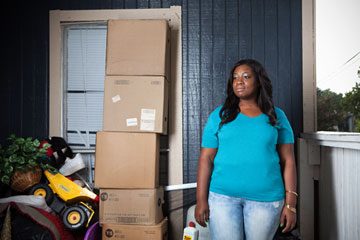
An uninsured single mother of two, Nicolette Cooksey is one of nearly 2 million Texans who would have been covered under the Affordable Care Act if the state had opted to expand Medicaid.
(4 of 4)
The clinic Cooksey uses is in a gleaming new 40,000-sq.-ft. facility owned by Legacy Community Health Services, which has nine sites across the city. Its 2013 budget is $50 million, up from $39 million in 2012, and the organization is planning to expand in the next several years by building two new clinics and purchasing private physicians' practices. Legacy's clinics are part of a vast network of taxpayer-funded health providers in Houston.
Harris Health, the county health care system, logs about 1.7 million outpatient visits per year and pays for that care largely with local property-tax revenue. Some 400,000 annual visits would be covered by Medicaid if the state expanded its program, according to CEO David Lopez. Like Legacy, Harris Health is growing. It plans to open nine new clinics to accommodate 300,000 more primary-care visits per year. Even with its new facilities, Lopez says, the system won't be able to meet the health care needs of Houston's uninsured. "The numbers get kind of scary," he says. "Honestly, we can double our volume today, and it will still not be doing enough."
Gauging just what is enough won't be easy. The burden of paying for the uninsured is already shared. Beyond taxpayer-funded health care, about $1,000 is built in to annual insurance premiums paid by American families just to offset the cost of caring for those without insurance. The broad expansion of coverage envisioned by President Obama was meant to recalibrate that burden, covering millions of the uninsured and lowering out-of-pocket costs for everyone else. Whether it ever works that way across the country will depend less on Obama than on Republican governors like Perry--and especially people like Terry Thrash.
